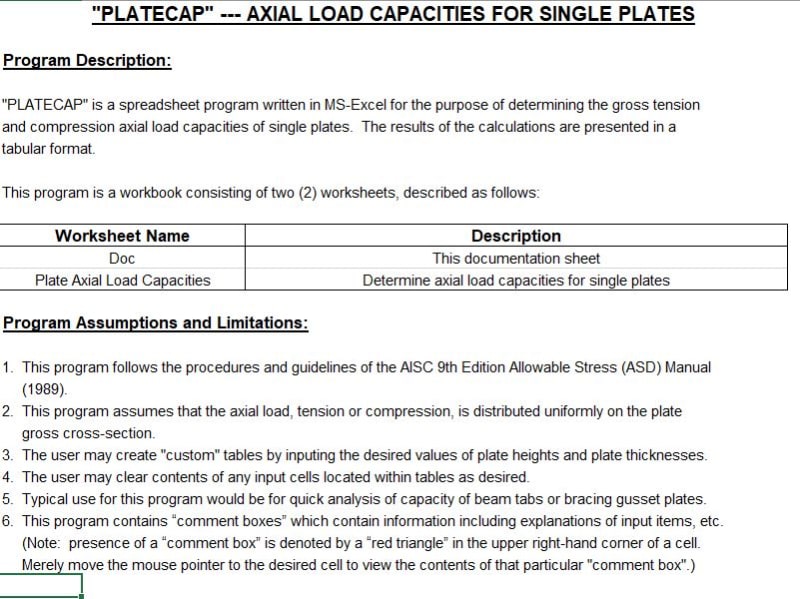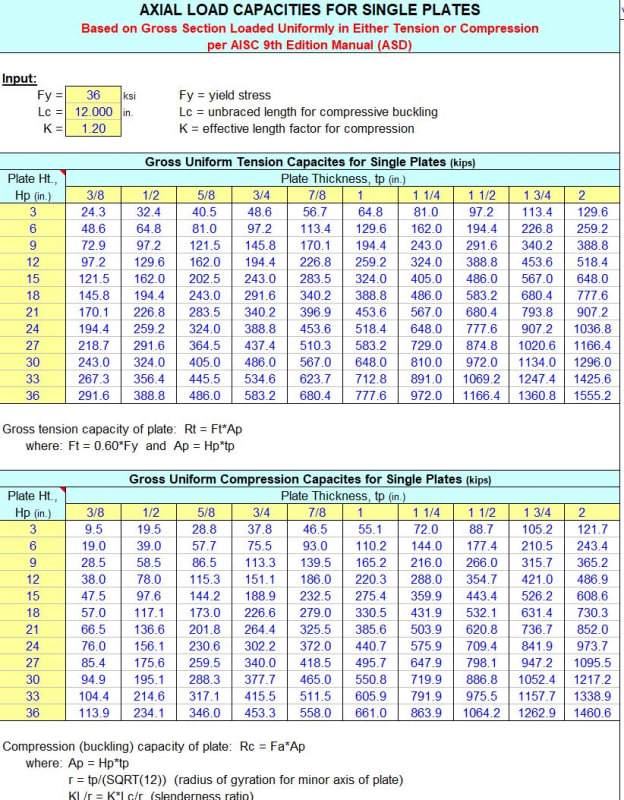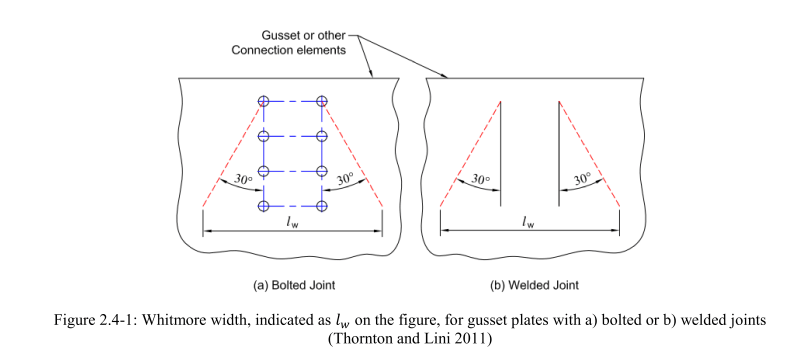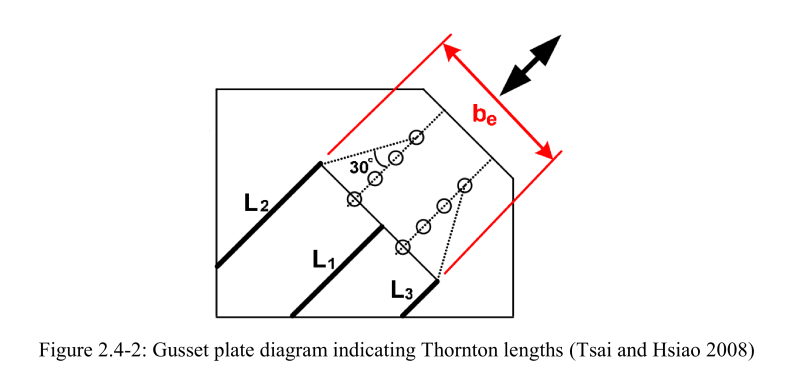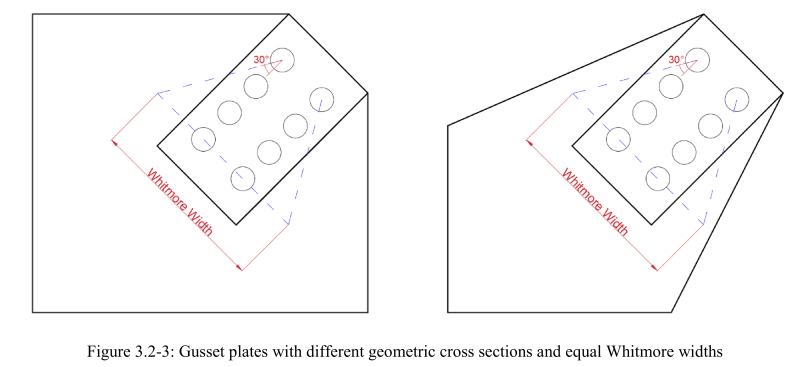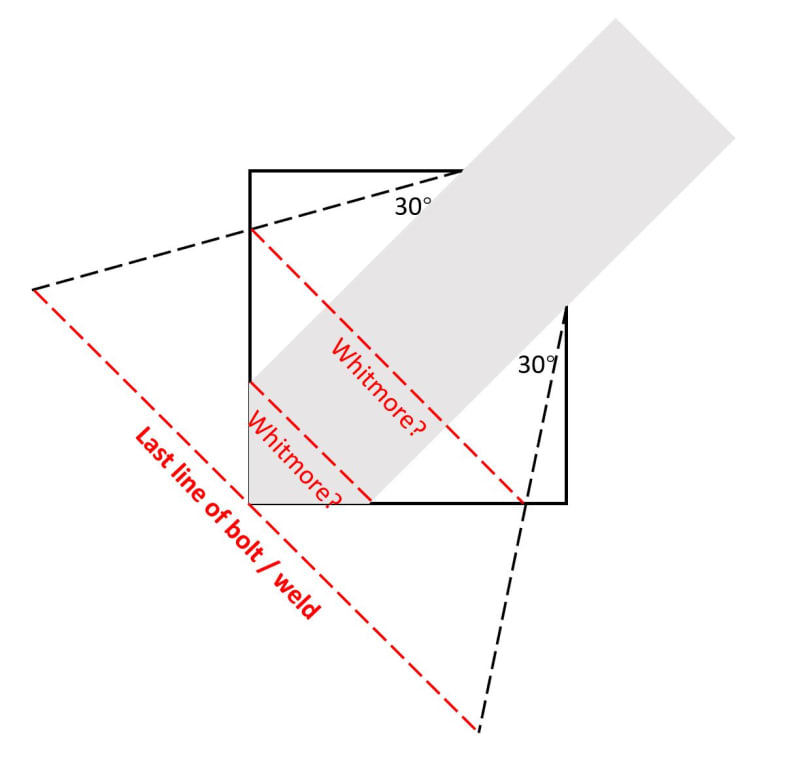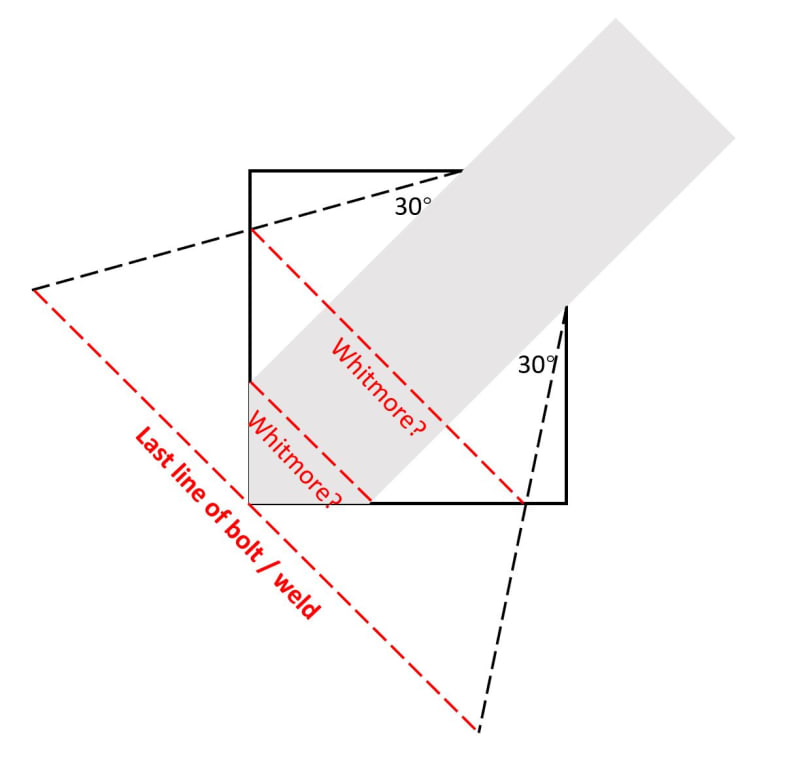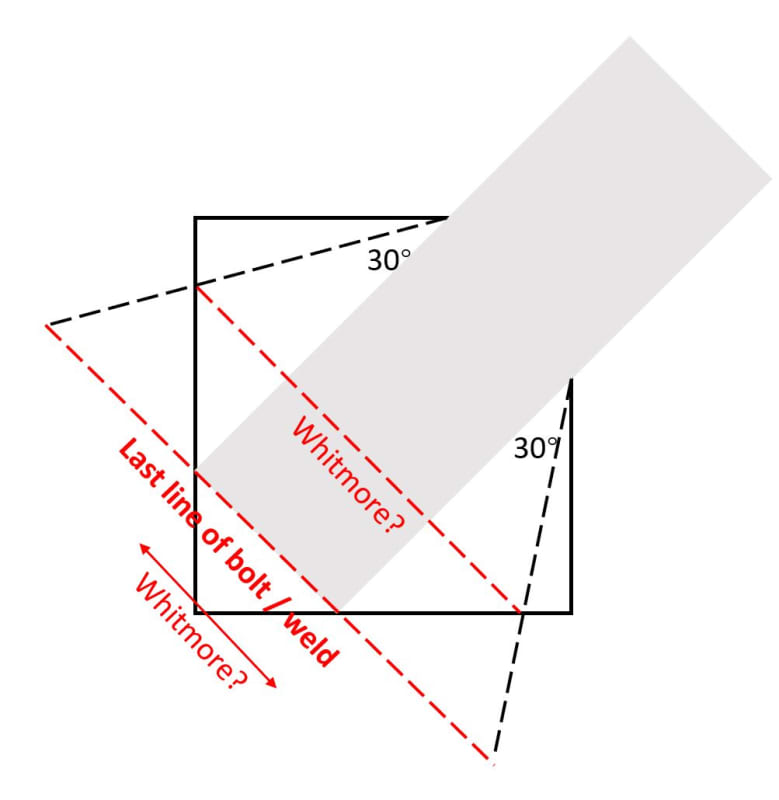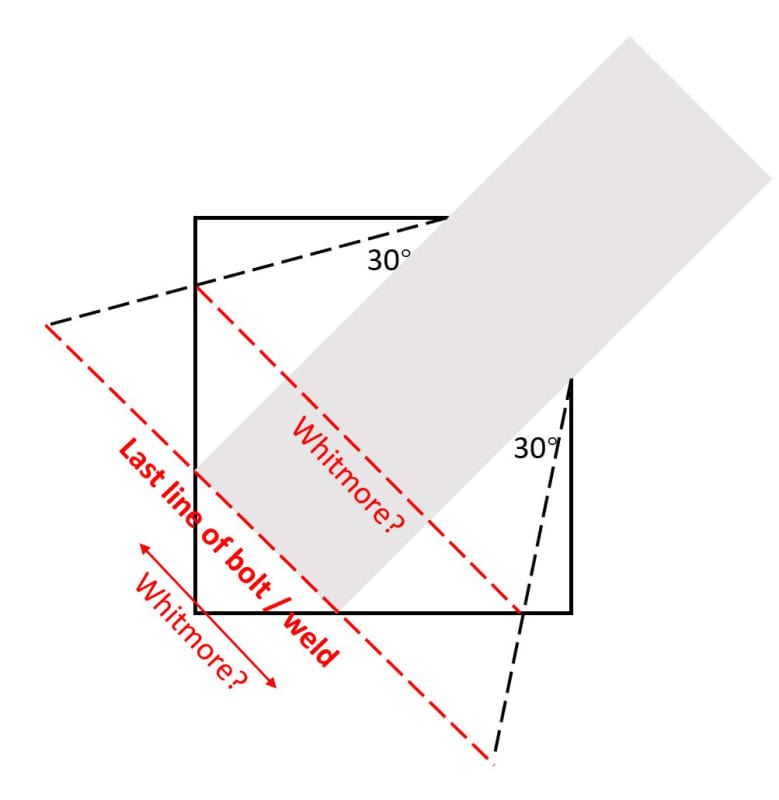Yochael1996
Civil/Environmental
Hi All,
I am currently evaluating a gusset plate, and the Whitmore section confuses me:
Typically, the Whitmore section can be easily found by the two 30-deg angles, like shown in the figure:
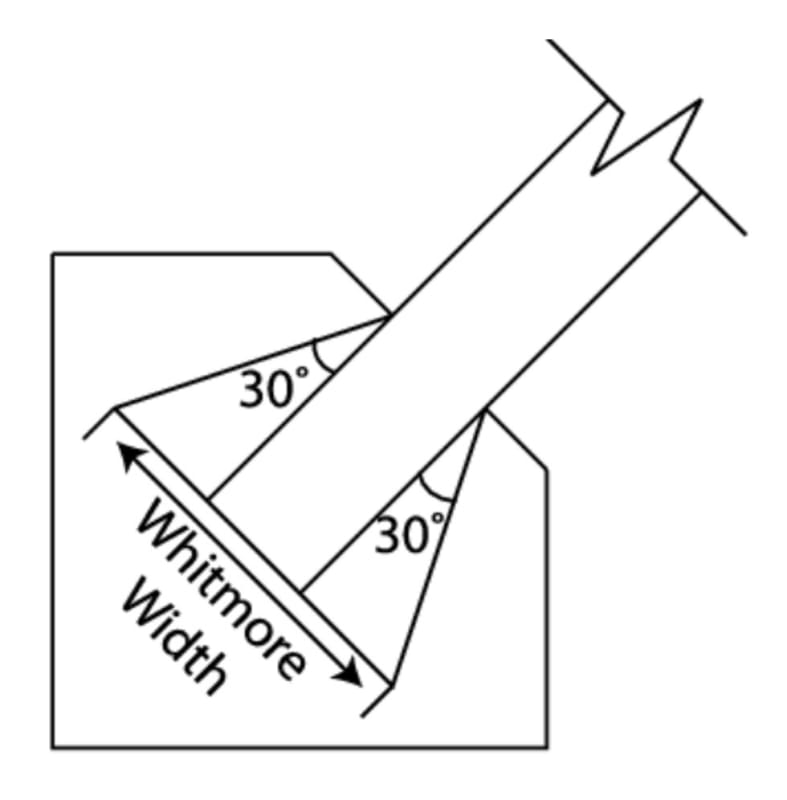
However, I meet a case that the truss member is all the way welded along the gusset plate, and the Whitmore section becomes not clear to me. I tried to draw my confusions in the following figure:
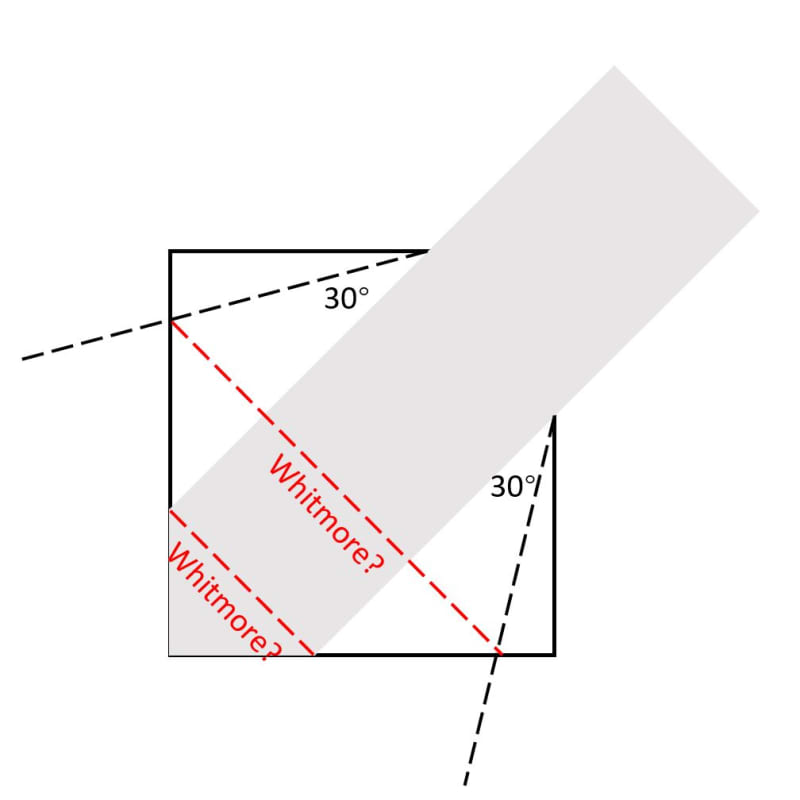
Can someone advise what should be the appropriate Whitmore section for the second figure? Thank you in advance!
Yochael
I am currently evaluating a gusset plate, and the Whitmore section confuses me:
Typically, the Whitmore section can be easily found by the two 30-deg angles, like shown in the figure:

However, I meet a case that the truss member is all the way welded along the gusset plate, and the Whitmore section becomes not clear to me. I tried to draw my confusions in the following figure:

Can someone advise what should be the appropriate Whitmore section for the second figure? Thank you in advance!
Yochael

